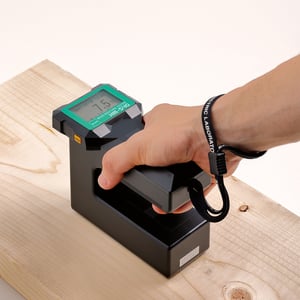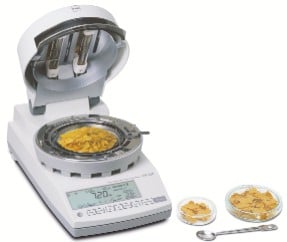 Quality control (QC), quality assurance (QA), and R&D managers have the responsibility of ensuring that their products meet certain quality standards. Part of this criteria is often moisture content specifications, with management needing to identify accurate moisture content along the manufacturing or the supply chain process.
Quality control (QC), quality assurance (QA), and R&D managers have the responsibility of ensuring that their products meet certain quality standards. Part of this criteria is often moisture content specifications, with management needing to identify accurate moisture content along the manufacturing or the supply chain process.
Let's have a look at standard moisture meters
A broad range of industries, including chemicals, pharmaceuticals, textiles, foods, pulp and paper, minerals, lubricants, and personal care products rely on moisture measurement instruments and devices to ascertain the percentage of moisture content in their products.
There are hundreds of moisture testing instruments-- from portable, handheld and desk-top testing equipment to in-line and on-line measurement instrument.
Depending on the application, manufacturers can choose from a variety of moisture meters:
- Loss-on Drying Instruments
- Karl Fischer Titrators
- Electrical Methods - Capacitance, conductance, rf, etc.
- Near Infrared
- Microwave
- Nuclear
Although the indicator scales on these test instruments vary according to the manufacturer, all moisture meters display moisture content in “percent” (%MC). Some moisture analyzers read %MC on an analog scale, while others provide a digital reading.
The precision and accuracy of the measurement of %MC, and the range of %MC measurement available, differs according to the instrument type and brand.
How do they compare to near infrared moisture analyzers (NIR)?
Infrared technology works by bouncing light off of the product’s surface. The moisture analyzer uses wavelengths to excite moisture molecules. A product that absorbs a higher amount of light has higher moisture content. The instrument measures reflected light and converts it into a percentage of moisture content--from 0% to 100% .
NIR technology comes in portable, online, inline and desktop (near-line) systems. Most test instruments provide instant results without product contact or causing damage to the sample.
Many QC managers need a single product to replace multiple test instruments. Some NIR meters have the capability to simultaneously test for moisture content and other chemical characteristics, such as fat, oil, alcohol, solvent, coating thickness or protein.
How to choose the right test instrument?
For QC managers, when it comes to quality control testing for moisture, one of their primary challenges has to do with choosing the right test instruments for analyzing moisture content.
The volume of moisture meters and NIR analyzers make it difficult to make a sound and confident choice.
Quality control managers need to have valuable knowledge of the sensitivity, accuracy, and performance of test instruments calibrated to their particular environment before they commit to buying.
Consider renting before purchasing
As part of the decision-making process to buy test equipment, why not rent the device first? During the rental period, evaluate the effectiveness of the product in three ways: accuracy, repeatability, and simplicity.
- Accuracy – readings are comparable to predetermined standards and methods.
- Repeatability – provide repeatable readings from user to user.
- Simplicity – operators can work the device accurately without sample pre-processing or altering and with a minimal amount of training
The calibration process, interface with computers and printers, information retention, and storage are also important considerations.
Measured against the above criteria—and other factors like time savings, efficiency, and your budget—you have the information needed to make an informed buying decision.
Choose a quality supplier
Make sure you find a vendor with a track record for renting test instruments. Here are five elements for rating vendors:
- Pre-sale support
- Initial calibration
- Operator training
- On site assistance with installation
- On-going customer support
If you go down the road of rent-to-buy, chose a supplier that allows you to keep the same instrument as this will eliminate change outs and recalibrating.
Also look for a supplier that offers a high-quality warranty, which covers the repair or replacement of test instruments that fail to perform according to specifications within the warranty period.



